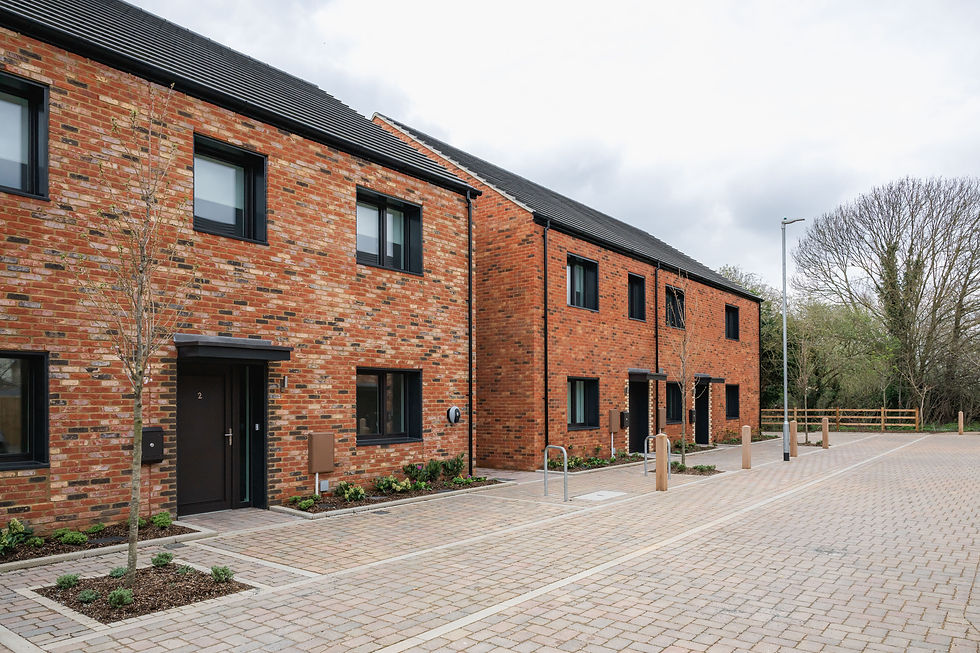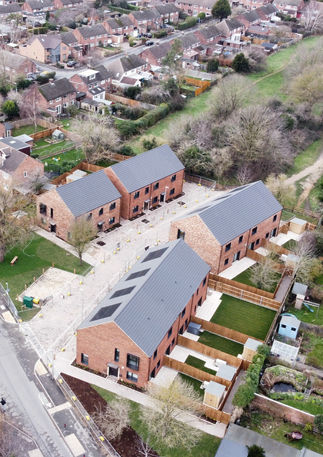top of page


1/1
Location: Borrowdale
Client: Hill Partnerships Ltd (JV with Cambridge City Council)
Value: £5.5m
Status: Completed March 2024
Fen Road, Ditton Walk
Located on three parcels of land in existing housing estates, these schemes were delivered through the Cambridge Investment Partnership (CIP). The CIP seeks to deliver 1,000 new homes across Cambridge, with these units being pilots for repeatable Passivhaus Certified schemes. Designed to planning (RIBA Stage 2+) by Pollard Thomas Edwards, ArchitecturePLB were appointed by Hill post-planning.
The three sites totalled 21 homes, with 12 being proposed at Fen Road, 6 at Ditton Fields and 3 at Borrowdale. All were proposed as the same house types, with process and details to be consistent across each scheme. Another two sites providing a further 14 units are under construction.

Although the dwellings were proposed as Passivhaus compliant from the outset, the Passivhaus Designer highlighted a number of concerns with the planning scheme, such as inadequate and poorly located plant spaces, excessively large windows and the eaves line creating a poor thermal bridge. ArchitecturePLB therefore had to replan the units substantially to provide space for MVHR and associated ductwork, ASHPs and hot water tanks.
We were aware that planning was hard-fought therefore did not want to substantially redesign the elevations, however the full height windows caused overheating problems in the summer and excessive heat loss in the winter. We sought to keep the proportions of the opening, but reduce the windows in height. Deep reveals with an aluminium surround give the homes a sense of quality, but also add shading. Eaves lines were raised slightly to alleviate the thermal bridge, with care taken not to increase the resultant ridge line.
The buildings were constructed using an off-site manufactured timber frame. The selected frame provider was innovative in that they provided closed panels with insulation, windows and doors pre-installed. The same company also provided the airtightness layer with a spray-on specialist paint. In principle this was beneficial, however the company was scaling up from a domestic to a commercial product. We therefore needed to review and check the system to make sure it was deliverable on a large scale. The first units took some time to deliver, but once a system had been developed, the subsequent sites were far more efficient.
bottom of page








